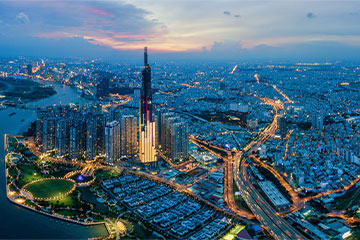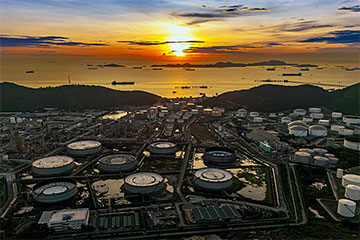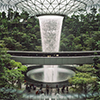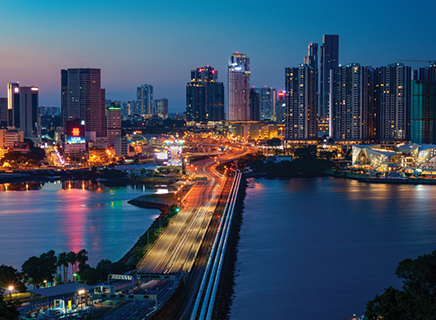ASEAN is at an inflection point.
We see a once-in-a-generation opportunity to revisit the roots of ASEAN’s formation.
For decades, economic order was built around efficiency. Global supply chains were mimicking Toyota’s just-in-time model, where cities such as Nagoya supported a single ecosystem directly or indirectly.
Such efficiency demands certainty and predictability. However, the era of stable geopolitics, predictable trade, and seamless supply chains is behind us.
As manufacturers evolve into brand owners, global economic leadership has shifted and trade balance is starting to tilt the other way.
The United States — once the architect and anchor of the post-WWII global system — is redefining its role, turning increasingly inward. Chinese corporates, on the other hand, are globalising and becoming more economically assertive, diversifying into Southeast Asia.
When China joined the WTO in 2001, it contributed just four per cent of global gross domestic product (GDP) against the United States (US) at 30 per cent. Today, China makes up 17 per cent, with the US at 25 per cent. The gap has narrowed sharply – China’s economy is now 65 per cent the size of the US.
We are now operating in a more fragmented, multipolar world. This becomes a strategic window for ASEAN member countries, to serve both as a production base and consumer market. And ASEAN is ready for it.
The ASEAN century beckons
If we look back in history, ASEAN was forged in crisis.
Today’s reality echoes that era. External volatility has again nudged us closer together – to collaborate out of necessity.
However, ASEAN is intentionally a looser arrangement, staying clear of domestic policies. This is unlike the European Union where one can seamlessly travel from Athens to Frankfurt with the same currency and with the same pricing logic.
It will be a tougher road in this region. But we can build our own model of collaboration – one rooted in diversity but aligned in outcomes.
Our shared future will be mapped, not by what we own, but by how we connect, amplify, and unlock opportunities together.
ASEAN’s role beyond the rhetoric
When tariffs, technologies, and financial systems become bargaining chips, country-of-origin rules shape sourcing decisions.
Supply chain resilience has become a boardroom imperative, affecting corporate risk governance.
As a result, corporates are de-risking by shifting into neutral, high-growth geographies and actively seeking ASEAN-based trading partners.
Vietnam has absorbed a wave of manufacturing FDI as both multinational and Chinese companies realign their supply chains.
Malaysia and Indonesia are drawing capital into semiconductors, EV supply chains, and critical minerals – sectors now under geopolitical spotlight.
Singapore continues to serve as a financial and headquarters hub for Chinese regional operations, thanks to its neutrality and financial sophistication.
As global brands rethink their supply chains and geopolitical risk becomes a key investment metric, ASEAN has the opportunity to grow beyond just a ‘China+1’ destination.
Build, Buy, Borrow → Bridge
The focus is shifting from individual countries to economic corridors such as the Johor-Singapore Special Economic Zone (JS-SEZ).
At UOB’s FDI Advisory Unit, we have been actively bringing corporates into Johor, meeting with government agencies and business associations to connect with the local supply chain.
Located 40 minutes apart by ferry, Batam-Singapore has quietly become a model of integration. With 17 industrial parks and 120 daily ferry rides, it shows what cross-border economic zones can achieve when we prioritise movements of goods, capital and people.
Even the SIJORI Growth Triangle, bringing together Singapore, Johor and the Riau Islands, is being revived. Once ahead of its time when first mooted in 1989, the momentum on this has since faded.
Today, we are looking to revisit this blueprint, not just for SIJORI but also for other sub-regional clusters such as Thailand’s Eastern Economic Corridor and Central-Western Economic Corridor or linking Indonesia-Philippines and Vietnam-Cambodia.
When regional resilience matters more than global scale, smaller local economic clusters may be more achievable in the short-term.
Reframing the ASEAN conversation
This is not about disruption. This is a wake-up call for ASEAN to come together again.
In a deglobalised world, ASEAN’s diversity is its best bet. ASEAN’s middle class is rapidly expanding, intensifying consumer-driven growth. Corporates are looking at ASEAN to tap on its growing middle class.
But here’s the hard truth: intra-regional Southeast Asian trade currently stands at an underwhelming 22 per cent compared with 70 per cent in the EU.
How did we get here? We need to look at operationalising ASEAN with a renewed lens.
This is not just about reducing tariffs and signing free trade agreements; it’s about trust, infrastructure, non-tariff barriers, and political will. Trade is no longer just about cost and logistics, it’s about ‘friendly’ territories.
Digital payment systems are a low-hanging fruit. Imagine using PayNow or Duitnow or the local equivalent across Singapore, Kuala Lumpur, Bangkok, Jakarta, and Manila.
Interoperability builds familiarity. It changes the conversation from assets owned to networks accessed; from competition to co-creation; from local strength to leveraged connectivity.
At the same time, navigating ASEAN’s diversity and complexity requires cultural understanding, local insights and trusted ecosystem partners.
At UOB, connectivity remains our differentiator. We connect businesses across countries, sectors, and segments, plugging businesses into our regional network of government agencies, trade associations, and professional bodies.
Across ASEAN, I am confident that our growth will be through trust, resilience, bridges, and building ecosystems.
Jimmy Koh currently heads the network partnerships and strategic marketing outfit at UOB’s FDI Advisory. As a managing director, one of his key roles is to identify and establish partnerships with local and overseas ecosystem partners, while providing direction and editorial guidance that can help profile FDI initiatives in Southeast Asia.
Jimmy has more than 20 years in banking and global markets research and business experience, having previously led UOB’s external and internal communications teams, as well as the Group’s CSR and Art Programme initiatives.
Follow him on LinkedIn










